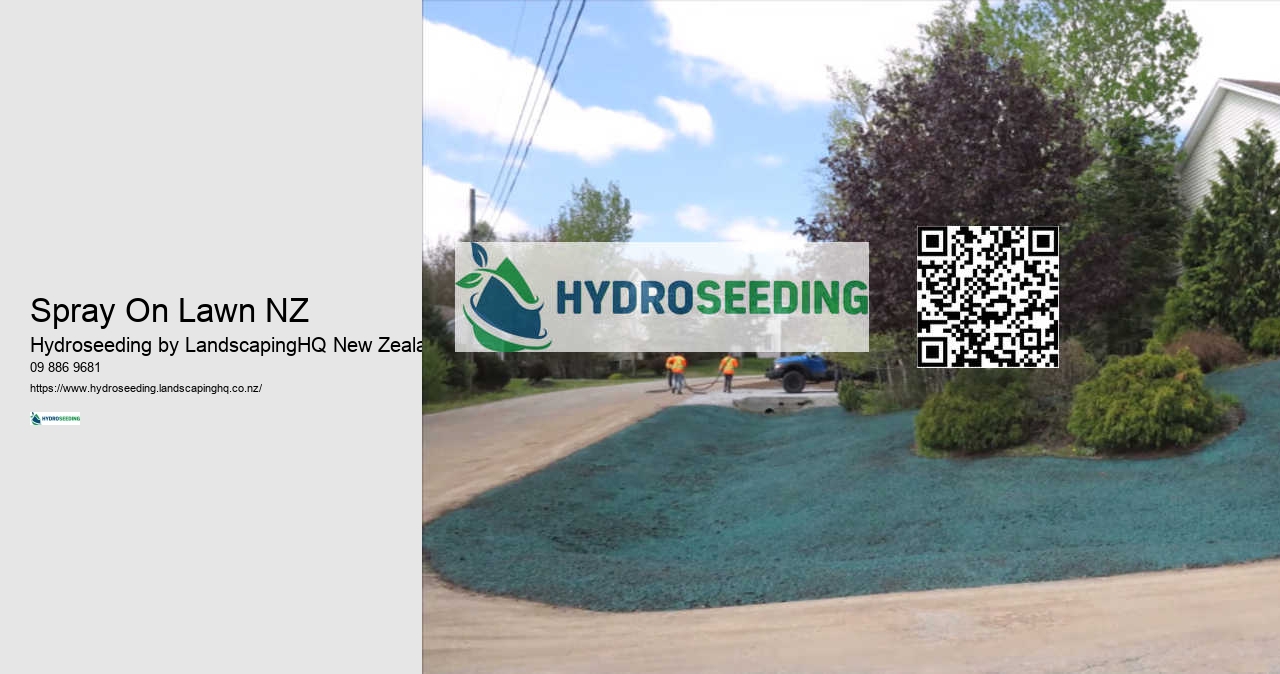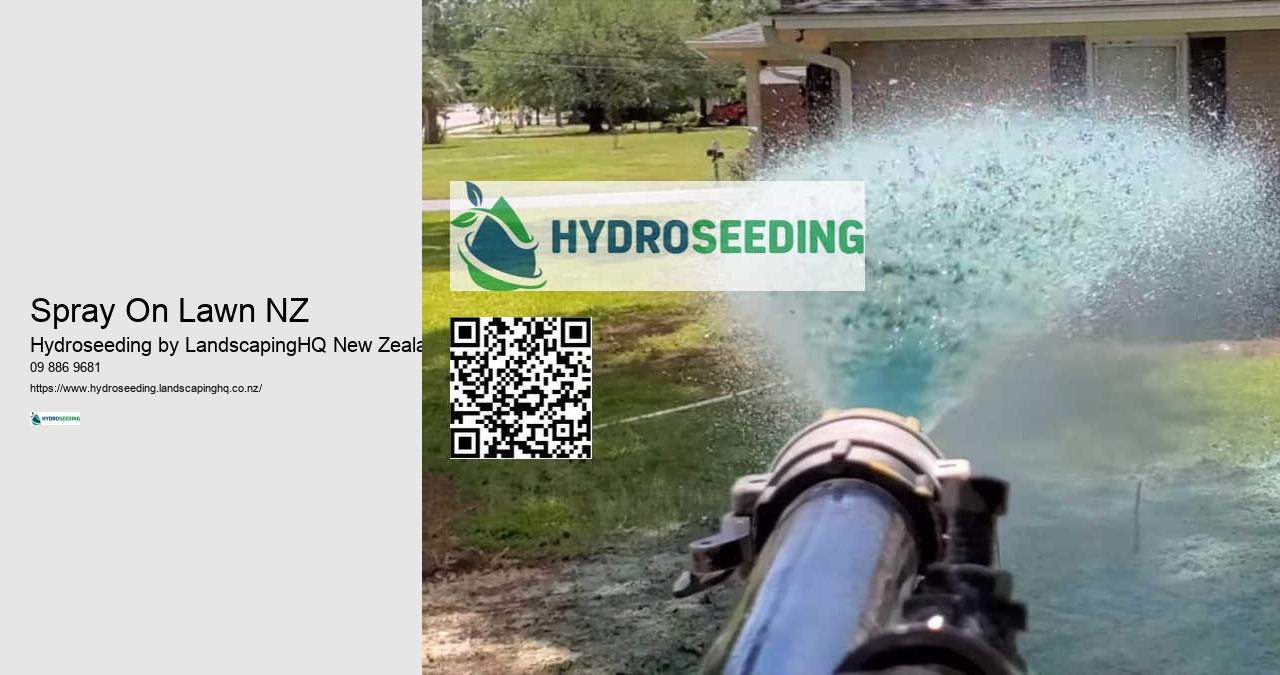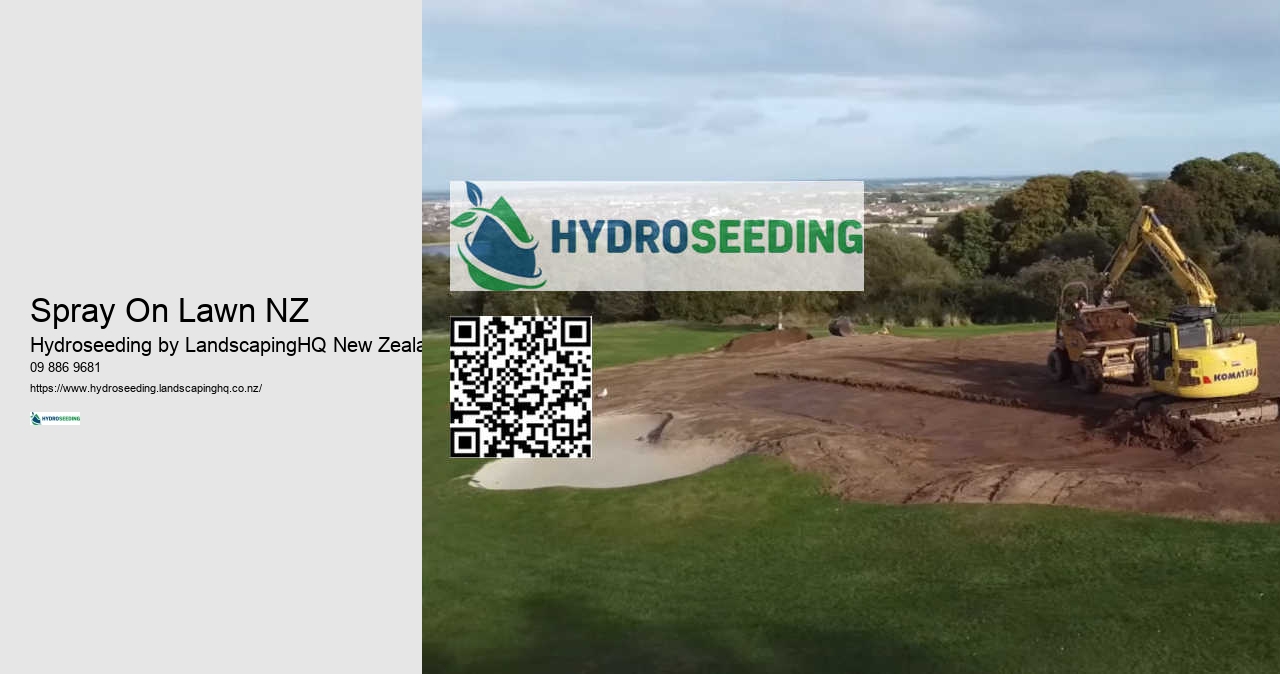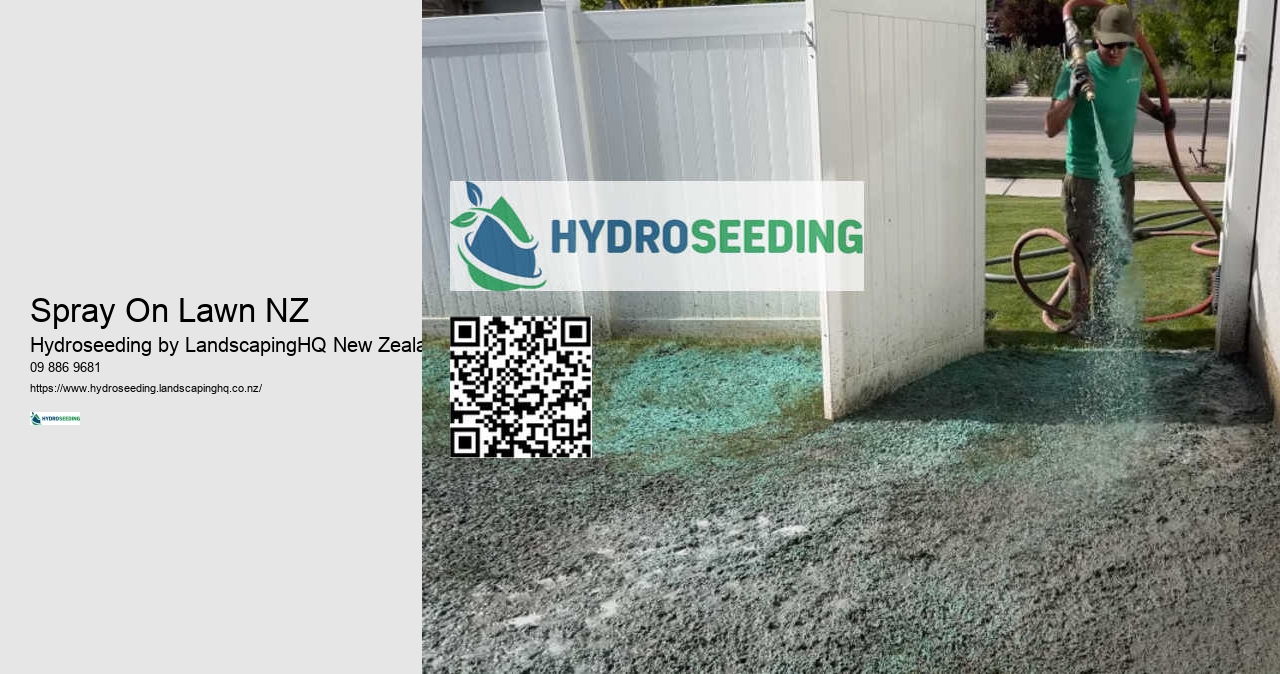

This process not only saves time but also cuts down on labor costs compared to traditional seeding methods. It is important to prepare the soil correctly. Follow the recommended fertilization guidelines. Our lawn requires constant moisture in the first few weeks following hydroseeding to encourage seed germination. Hydroseeding could be the best option for those who prioritize speed, erosion control and coverage. Achieve lush green landscapes effortlessly - Learn how Hydroseeding New Zealand can make a difference.
We know that controlling erosion is crucial for maintaining healthy landscapes, whether it's a residential backyard or a sprawling commercial property. This is a great option for those who want to achieve a balance between cost and quality. Traditional seeding might appear cheaper upfront but often incurs additional costs in maintenance and potential reseeding. Let's examine how each element plays a key role in maintaining the lush carpet of grass.
Let's transform and enhance your residential landscape. As seedlings start to sprout, you can gradually reduce frequency and transition to a more frequent, deeper watering. Hydroseeding and traditional seeding both have their advantages and disadvantages. Hydroseeding is not only faster at establishing grass, but it also reduces maintenance costs over the long term.
Different seeds have varying requirements for soil pH, fertility, and drainage. The mulch that is used in this process helps to retain moisture. Let's look at the benefits of hydroseeding and what it can do for your outdoor space. This method is ideal for sloped areas or those prone runoff on residential properties.
Hydroseeding in New Zealand is not just for lawns. Contact us now to get started. Once the slurry is ready, we spray it evenly across the designated area using a high-pressure hose. When it comes to hydroseeding there are many challenges.
Fertilization is another key aspect of maintenance. Conversely, in drier areas such as Central Otago, we need to ensure adequate irrigation to support germination and growth. Additionally, hoses of varying lengths offer flexibility to navigate different terrains, ensuring every corner receives attention.
We are excited about the integration of drones into precision agriculture, which would allow for a more precise monitoring and application of seeds. Moreover, hydroseeding is an environmentally friendly option compared to traditional erosion control methods. That's why we offer commercial hydroseeding applications designed to deliver rapid and lush growth.
The uniform distribution of seed reduces patchiness and creates a uniformed, lush look. In terms of maintenance, it's essential to avoid mowing until the grass reaches about 7 to 8 centimeters tall. It can recover quickly after being worn out.
Our commitment to excellence means we don't just meet expectations-we exceed them. Additionally, the slurry's bonding agent helps combat erosion, which is particularly beneficial for sloped or uneven terrains, ensuring the seeds stay in place until they germinate. We must pay attention to watering, mowing, fertilizing, and pest control to keep our lawn in top condition. Let's transform your residential landscape together and create a lasting impression. We ensure rapid germination, robust growth and a wide range of applications, from large playing fields to residential lawns, by choosing hydroseeding.
New Zealand's diverse weather conditions mean that the seeds we choose must be suited to local temperatures and rainfall patterns. As we embark on this journey to create lush landscapes, it's vital to begin with a well-prepared foundation. The mixing tank blends water, seed, mulch, and fertilizer into a uniform slurry. In New Zealand, the use of hydroseeding is not limited to just lawns.
Our hydroseeding experience allows us to deliver high-quality turf. The mixture used in hydroseeding can be customized to suit specific conditions and requirements, ensuring the best possible outcome for every field. The hydroseeding technique is one of many landscaping methods available. Hydroseeding is particularly well-suited for hillsides due to its ability to cover large, uneven surfaces quickly.
By selecting the right seeds, we ensure that our hydroseeding efforts lead to robust growth regardless of regional climate differences. Lastly, keeping an eye out for pests and diseases is vital. We choose seed blends that are best suited for the local climate and soil conditions, ensuring optimal growth and stabilization.


Unevenness of the lawn is another major advantage. It uses less than traditional seeding methods, making it the perfect choice for drought-prone regions or areas with limited water. By choosing this method, schools and stadiums can ensure their grounds remain green, safe, and inviting year-round. We'll want to cut only the top third of the grass blades to avoid stressing the young plants. Testing the soil's pH and nutrient levels gives us a clear picture of what it might be lacking.
We get results much quicker compared to using other methods of seeding. Time is money. The type of seed you choose should reflect your site's unique requirements, such as climate, soil, and what the area is intended to be used for. We then utilize a hydroseeder to evenly distribute the slurry, ensuring optimal contact between the seeds and the soil.
Balancing these factors ensures that the hydroseeding process is effective regardless of location. It's a great way to quickly and efficiently cover large areas in a uniform layer. Our commitment to quality and tailored services means we're ready to tackle any project, big or small. We also use a hydroseeding slurry that contains mulch, fertilizers, and tackifiers.
It reduces dust and prevents soil erosion, making the area healthier for both students and staff. Hydroseeding requires consistent watering to ensure the seeds germinate and grow effectively. We're seeing a growing trend towards environmentally friendly practices, and hydroseeding fits perfectly into this narrative. We must ensure our lawns receive adequate moisture, especially during the crucial germination period.
Hydroseeding can scale up to meet the growing demand for green spaces in our cities. We should water lightly two to three times a day, depending on the weather, to keep the soil moist but not waterlogged. While our equipment lays the foundation for successful hydroseeding, it's the application techniques that truly harness their potential, especially in erosion control projects. Raking the soil, removing rocks, debris and clumps, ensures that the hydroseeding solution will adhere to an even layer. By understanding these needs, we can select a seed mix that will establish quickly and grow vigorously.
LandscapingHQ is committed to your success. The reason is that it sprays a mixture of mulch, fertilizer, seed, and water over a larger area. Inconsistent watering leads to patchy growth and poor root development. This ensures your new lawn or landscape will thrive without any competition.
Drainage is essential to avoid water pooling which can cause seed rot, and hinder germination. One of the key aspects of successful hydroseeding is effective weed control, which ensures that your newly established lawn or landscape thrives without competition. We are familiar with the challenges of maintaining public areas. Planning a successful hydroseeding campaign requires an understanding of New Zealand's diverse climate.
Expansive parks and sports fields aren't the only beneficiaries of our hydroseeding expertise; residential properties can also enjoy the lush, vibrant results this method delivers. First, watering is key. By keeping the grass lush and healthy, we create a dense turf that naturally resists weeds. Soil Weeds compete for resources, hindering grass growth.

We also need to be cautious about over-fertilizing. Our team utilizes a specialized mix of seeds, mulch, fertilizers, and water, which we apply uniformly over the target area. Weed control is also important. Let's take a look at some important considerations.
Let's work together to safeguard your property against erosion's challenges. Hydroseeding has many advantages, including being cost-effective. But its efficiency will lead to cost savings over time, particularly if watering is reduced and reseeding is minimized.
We understand that controlling erosion is critical to maintaining a healthy landscape, whether you're working on a small backyard or a vast commercial property. Our hydroseeding service incorporates these strategies to keep your landscape vibrant and free of weeds, creating a beautiful result. The spring season, from September to November offers increased daylight and warmth that stimulate seed growth.
This eliminates patches and creates a dense, consistent coverage. It also reduces the cost of re-seeding. Our approach begins with preparing the soil to ensure it's ready to receive the hydroseeding mixture.
Weeds compete for nutrients, sunlight and water with the grass, which can stunt the growth of the lawn and affect its overall health. During these seasons, temperatures are moderate, and rainfall is typically sufficient to support the germination and growth of seeds. When we choose seeds, we're not just picking a type of grass or plant; we're setting the foundation for a thriving ecosystem. This method promotes rapid germination and establishment of the grass, resulting in lush, green landscapes that are both sustainable and aesthetically pleasing.
With our expertise in hydroseeding, we're committed to delivering top-quality turf solutions. Hydroseeding offers flexibility, since we can custom-design the seed mix for specific landscape needs or environmental conditions. This method can be used on residential properties as well.
In schools, maintaining an attractive and safe environment is vital. While the North Island is generally warmer and has milder weather, this allows for a more extended growing season. While this method can be less expensive initially, it often requires more time and labor.
By investing in research and development, we can ensure that hydroseeding remains at the forefront of sustainable landscaping practices in New Zealand. We recommend monitoring the lawn for any signs of weed emergence. Hydroseeding can be affected by wind conditions. Landscaping

Sand alone is not effective for erosion control since it lacks cohesion. However, sand can be mixed with other stabilizing materials, such as hydroseed, to aid in erosion prevention on certain landscapes. Hydroseeding, combined with soil amendments, is an effective solution for stabilizing sandy soils and controlling erosion. Reach out to Hydroseeding New Zealand to discuss erosion control strategies for sandy landscapes.
Yes, turf can help stop erosion by providing a dense root structure that holds soil in place. Grass roots stabilize the soil, reducing the risk of surface runoff and erosion. Turf is particularly effective on slopes, where it offers an eco-friendly solution to prevent soil loss. Hydroseeding New Zealand can recommend suitable turf and seeding options for erosion control on your property.
Fixing a bumpy lawn often involves leveling the ground, adding topsoil where needed, and reseeding or hydroseeding. Aerating the soil and filling low spots can also help create a smoother, even lawn. Hydroseeding New Zealand offers professional lawn leveling and hydroseeding solutions to help achieve a pristine, even lawn.
A fertilizer with a balanced N-P-K ratio supports initial growth and root establishment post-hydroseeding. Hydroseeding New Zealand advises on using the right fertilizers to strengthen and nourish your new lawn.
Hydroseeding over old grass can limit the effectiveness of the new seed. For the best results, remove any old grass to ensure strong seed-to-soil contact. Our team at Hydroseeding New Zealand can handle all aspects of lawn preparation. Reach out for assistance in creating a fresh, new landscape.